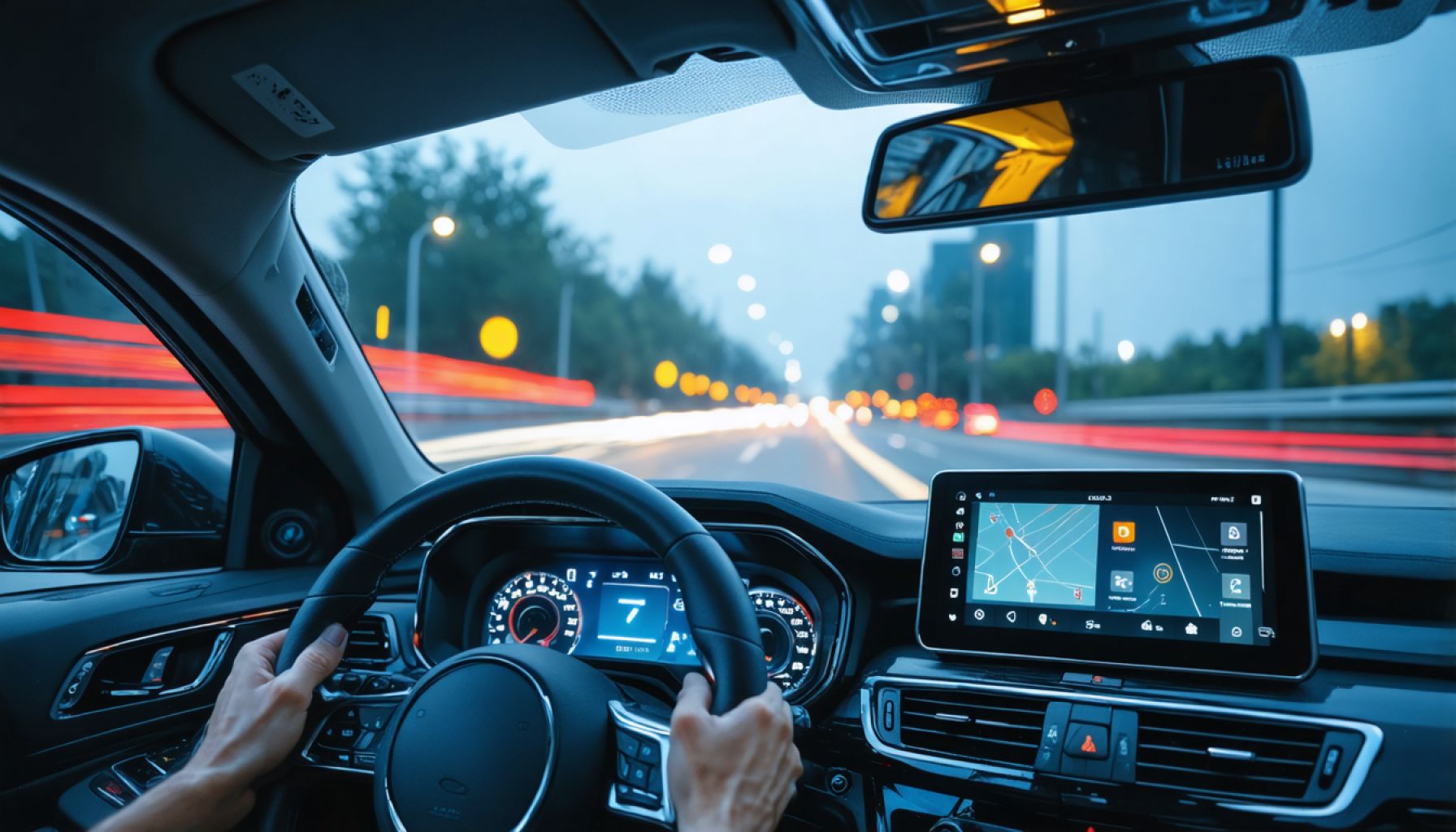- Semi-autonomous vehicles face significant safety challenges, with many failing to meet basic safety standards in key areas such as driver monitoring, lane keeping, and steering control.
- The IIHS tested 14 vehicle models, revealing only one with an “acceptable” safety rating, while others performed poorly, including Tesla’s Autopilot.
- Effective integration of speed control, braking, and steering systems is crucial, as misinterpretations can increase risks on the road.
- Industry responses include recalls and updates, emphasizing the need for improved safety measures and learning from successful competitor models.
- Despite setbacks, there’s potential for technological improvement, requiring careful development alongside bold innovation to achieve safer autonomous driving.
On the crisscrossing highways of our modern world, a digital revolution is underway. Cars that can navigate without human hands have taken the driver’s seat, steering towards a promising future where technology could ease commutes and reduce pollutants. Yet, the road to safety for these semi-autonomous vehicles appears riddled with unexpected pitfalls.
In a testing initiative designed to evaluate the capabilities of partially self-driving cars, the Insurance Institute for Highway Safety (IIHS) set fourteen vehicles through a stringent examination spanning seven critical safety measures. The study, casting a spotlight on popular models from Tesla, Ford, BMW, and Nissan, revealed a stark and somewhat unsettling reality—many of these vehicles struggle to meet basic safety expectations.
The IIHS investigation prioritized assessing systems involved in driver monitoring, lane keeping, and steering control—a trinity of features integral to the ostensibly seamless experience associated with self-navigating technology. Despite high hopes, the results were sobering. Only one vehicle managed to achieve an “acceptable” rating, while two others limped in at “marginal.” The remaining 11—including the lauded Tesla Autopilot and its Full Self-Driving Beta—fell into the “poor” category, highlighting substantial areas of concern in their technological frameworks.
The implications of these findings extend beyond just consumer disappointment. The safety of millions relies on the effective integration of speed control, braking, and steering systems, particularly as these cars increasingly merge with traditional traffic. Without appropriate safeguards, these systems can misinterpret scenarios, inadvertently escalating risk rather than mitigating it. Such weaknesses stand in stark contrast to the sleek promise of self-driving efficiency and keener environmental consciousness that lure consumers towards electric vehicles (EVs).
Following the high-profile tests, which spotlighted Tesla’s shortcomings, recalls and updates were initiated for their systems. This move isn’t isolated; it serves as a clarion call for the entire auto industry to elevate safety thresholds and integrate best practices gleaned from successful aspects of competitor models. Amid a sea of dismal grades, some systems showed promise in individual categories, offering a glimmer of potential for future development and integration.
As these technological marvels hurtle down the highway of innovation, the takeaway is clear: evolution needs caution intertwined with bold advancement. Until the automated highway achieves unfaltering efficiency, the human touch remains a necessary safeguard. The potential for improvement is vast, and with conscientious efforts, tomorrow’s roads could very well fulfill the optimistic visions that inspired this journey.
The Truth About Autonomous Vehicles: What You Need to Know Now
As autonomous vehicles (AVs) advance along the digital superhighway, they promise significant improvements in traffic management, pollution reduction, and commuting ease. However, recent evaluations by the Insurance Institute for Highway Safety (IIHS) have unveiled critical safety concerns, especially with popular models like Tesla, Ford, BMW, and Nissan. These findings reveal that the dream of seamlessly safe self-driving cars isn’t yet fully realized.
Key Insights from IIHS Testing
1. Disappointing Safety Scores: Out of fourteen vehicles tested, a single model managed to earn an “acceptable” rating, while others showed a wide range of inadequacies in their safety systems, particularly in driver monitoring, lane-keeping, and steering control.
2. Tesla’s Performance: Despite being a leader in the autonomous vehicle sector, Tesla’s Autopilot and Full Self-Driving Beta fell short, receiving “poor” ratings and necessitating recalls and system updates.
3. System Misinterpretation Risks: Effective integration of automation features like speed control, braking, and steering is crucial. These systems’ current weaknesses may lead to misinterpretation of on-road scenarios, increasing risks instead of reducing them.
Real-World Use Cases and Challenges
– Traffic Management: AVs have the potential to streamline traffic flows and reduce congestion, but this depends heavily on flawless network integration.
– Environmental Impact: While electric vehicles (EVs) contribute to lower emissions, their current safety systems need enhancements to ensure they don’t compromise human safety in pursuit of environmental benefits.
Pros and Cons of Autonomous Vehicles
Pros:
– Reduced Human Error: Autonomy reduces the likelihood of accidents caused by human error, which accounts for a significant percentage of road incidents.
– Efficiency: By potentially optimizing traffic patterns and eliminating inefficient driving practices, AVs can reduce travel time and fuel consumption.
Cons:
– Safety Concerns: Current technologies may misjudge complex driving situations.
– Consumer Trust: The performance gaps revealed by IIHS testing could hinder broader adoption.
Industry Trends and Market Forecasts
– Growing Investments in Safety Features: Automakers are expected to increase research and development spending to enhance their AV safety systems and regain consumer trust.
– Legislative Developments: Governments may enforce stricter regulations and safety standards to ensure these vehicles meet public safety expectations.
Recommendations for Drivers and Buyers
– Stay Informed: Regularly check for software updates and recalls from manufacturers to ensure your vehicle is running the latest safety protocols.
– Driver Vigilance: Always remain attentive and ready to take control, as the technology is not yet refined enough for fully hands-off driving.
– Research Before Purchase: Understand the safety ratings and reviews of semi-autonomous systems in vehicles you’re considering, and balance these with factors like environmental impact and cost.
Conclusion
The path to achieving truly safe and efficient autonomous vehicles is challenging, but with concerted evolution and human caution, these technologies can eventually meet the high expectations placed upon them.
For more on the technological and safety advancements in autonomous vehicles, visit the Insurance Institute for Highway Safety.
Stay informed and safe on the road as we navigate this transformative automotive era.
